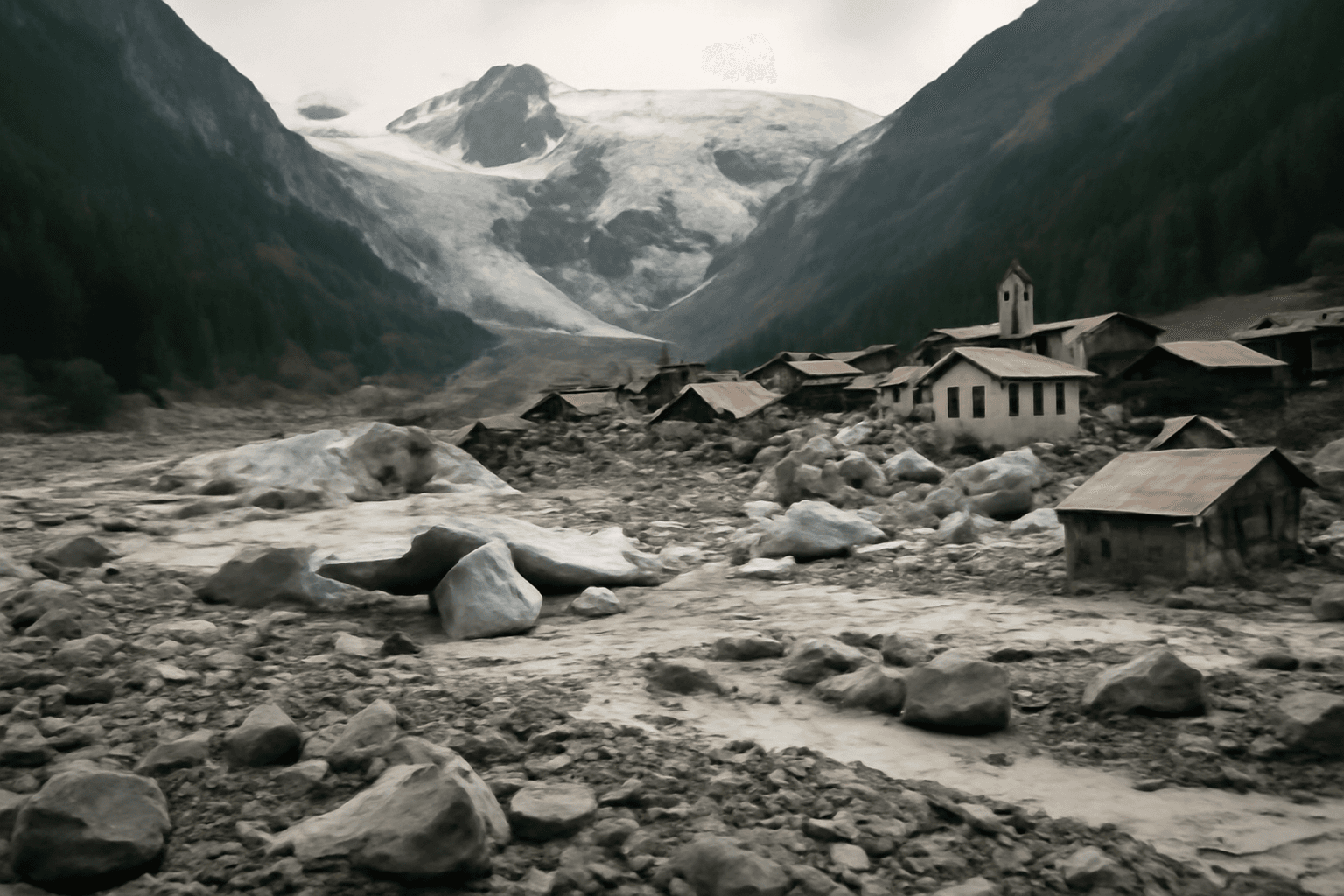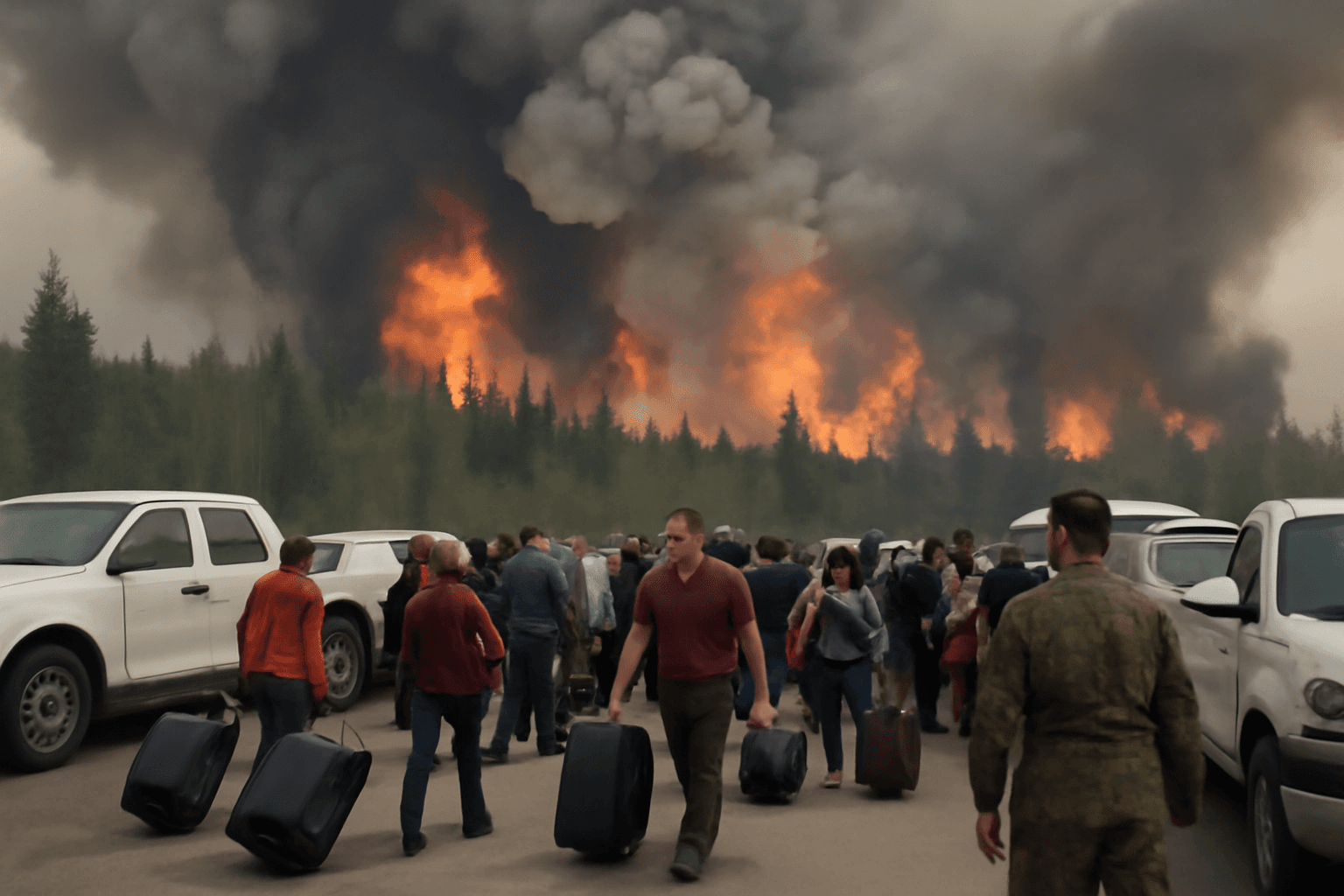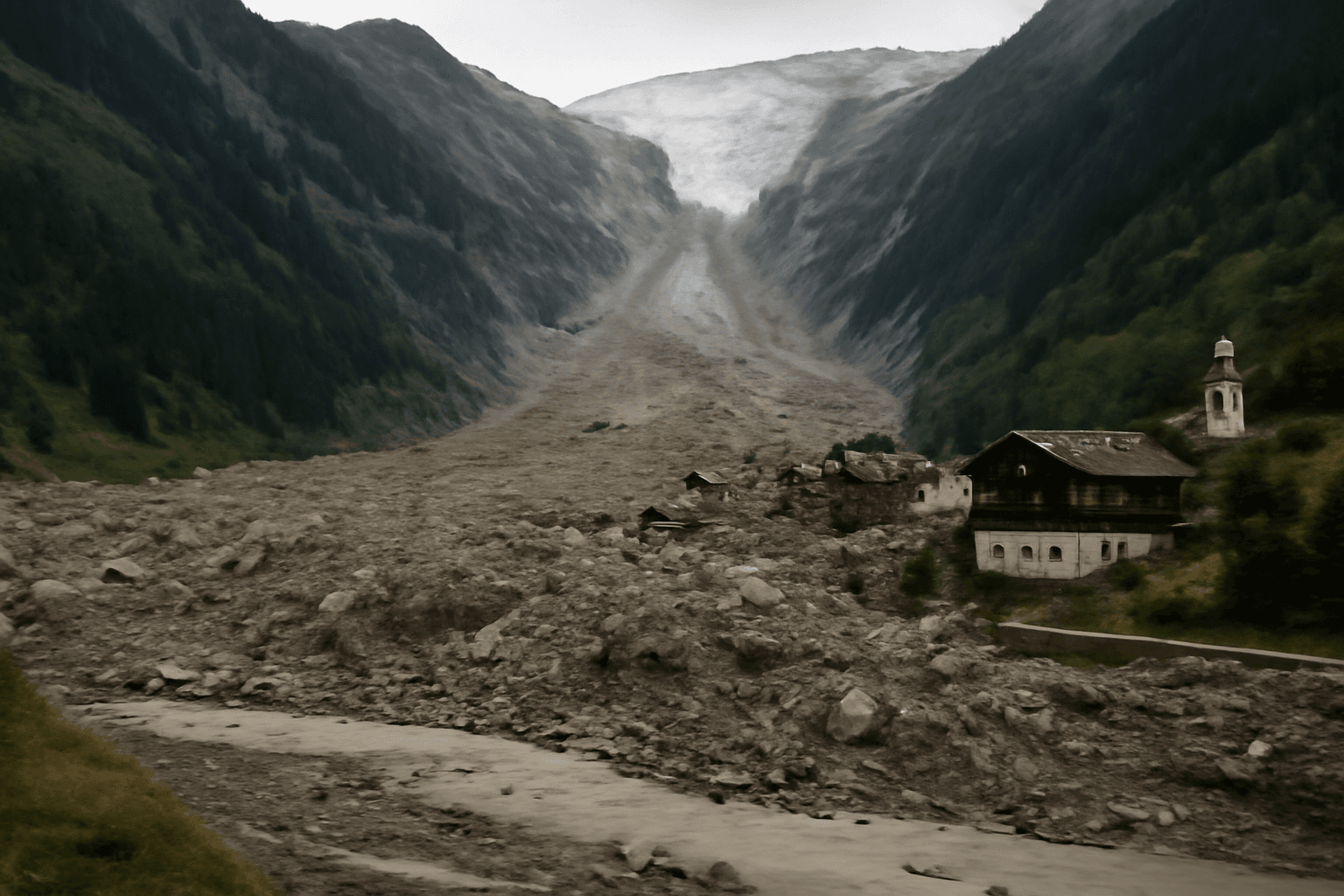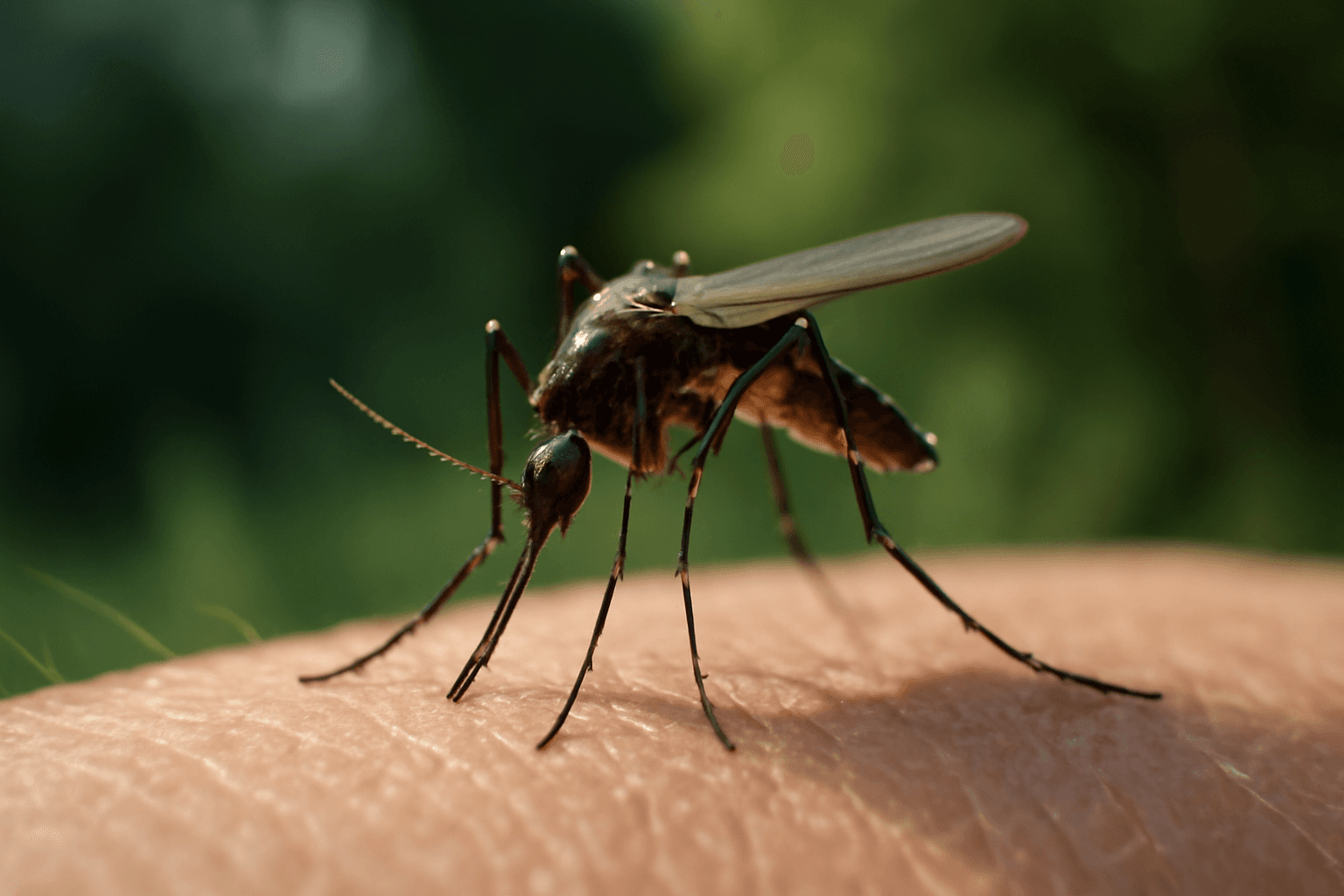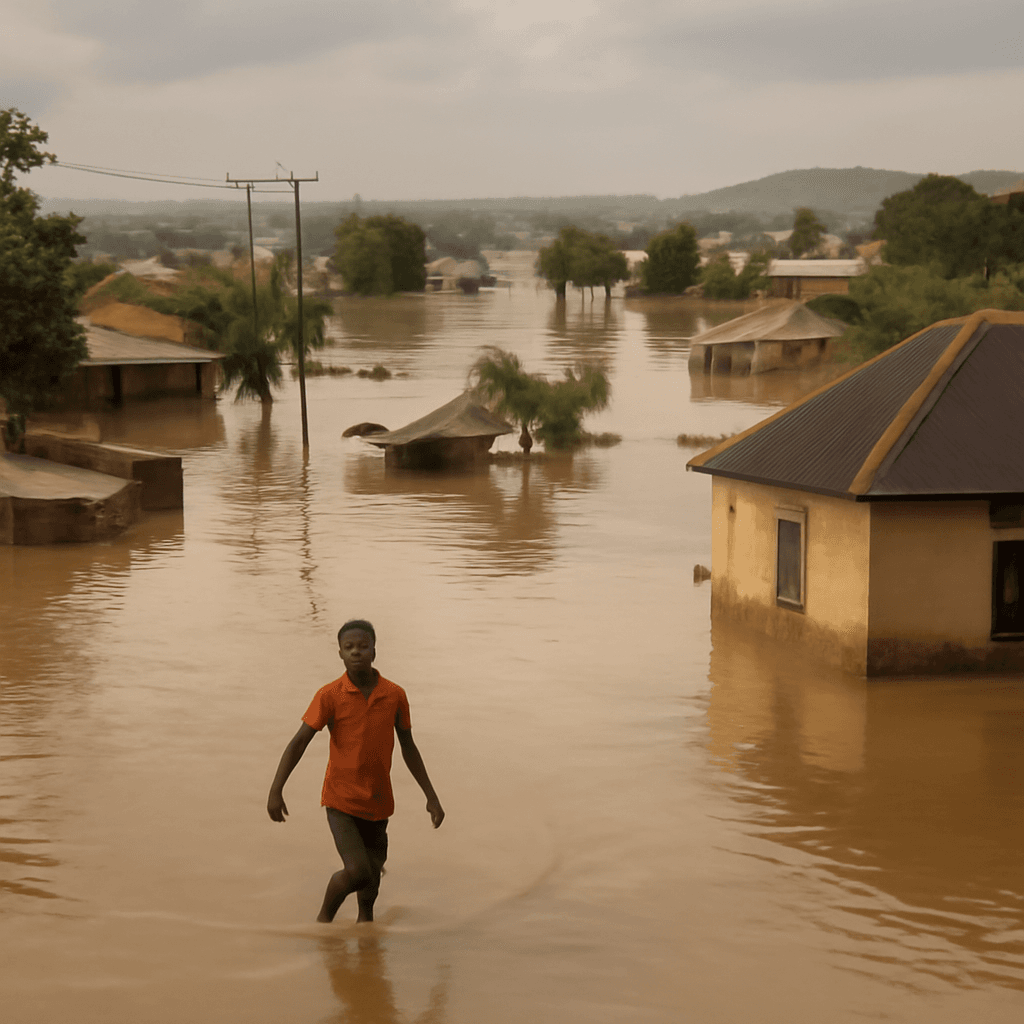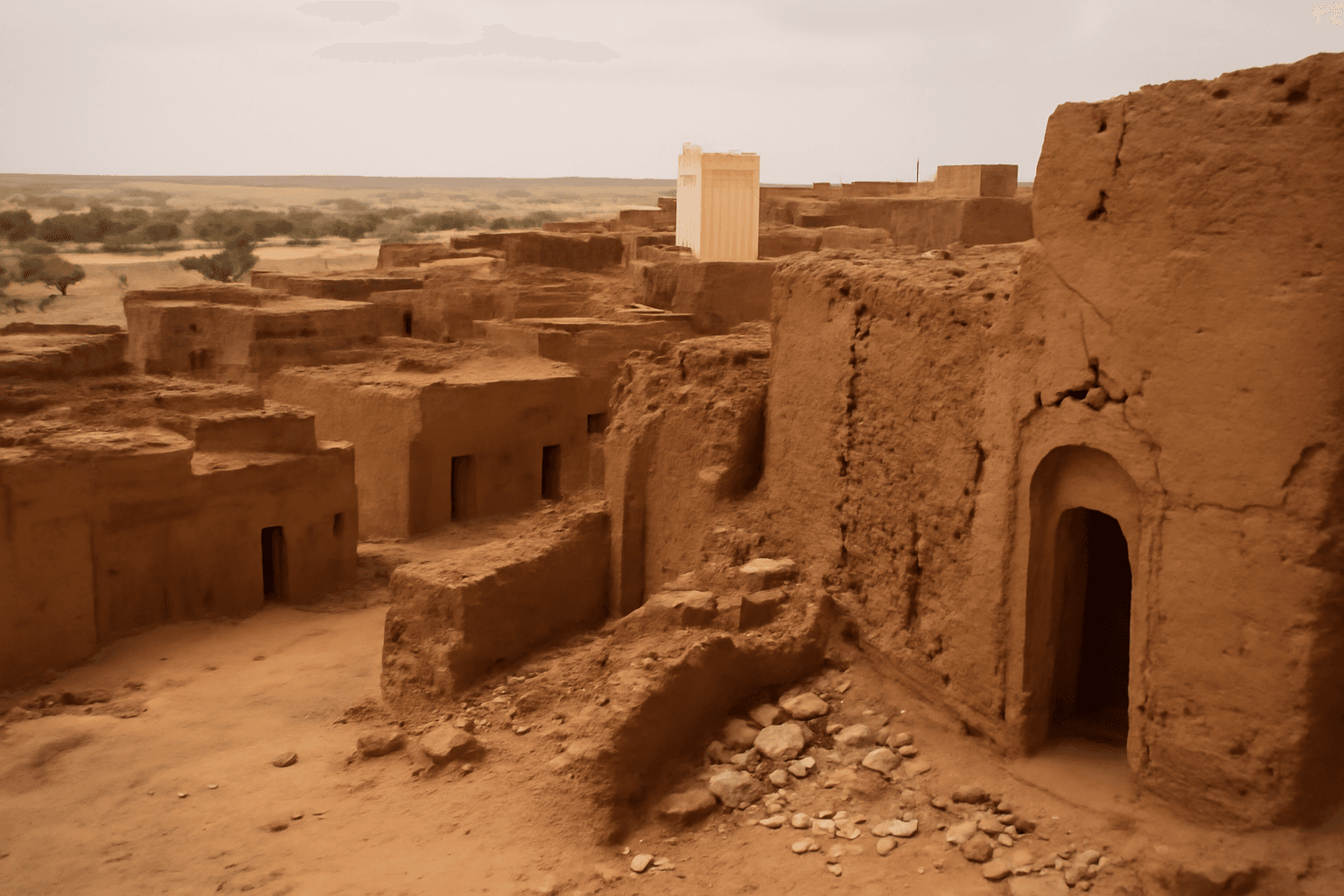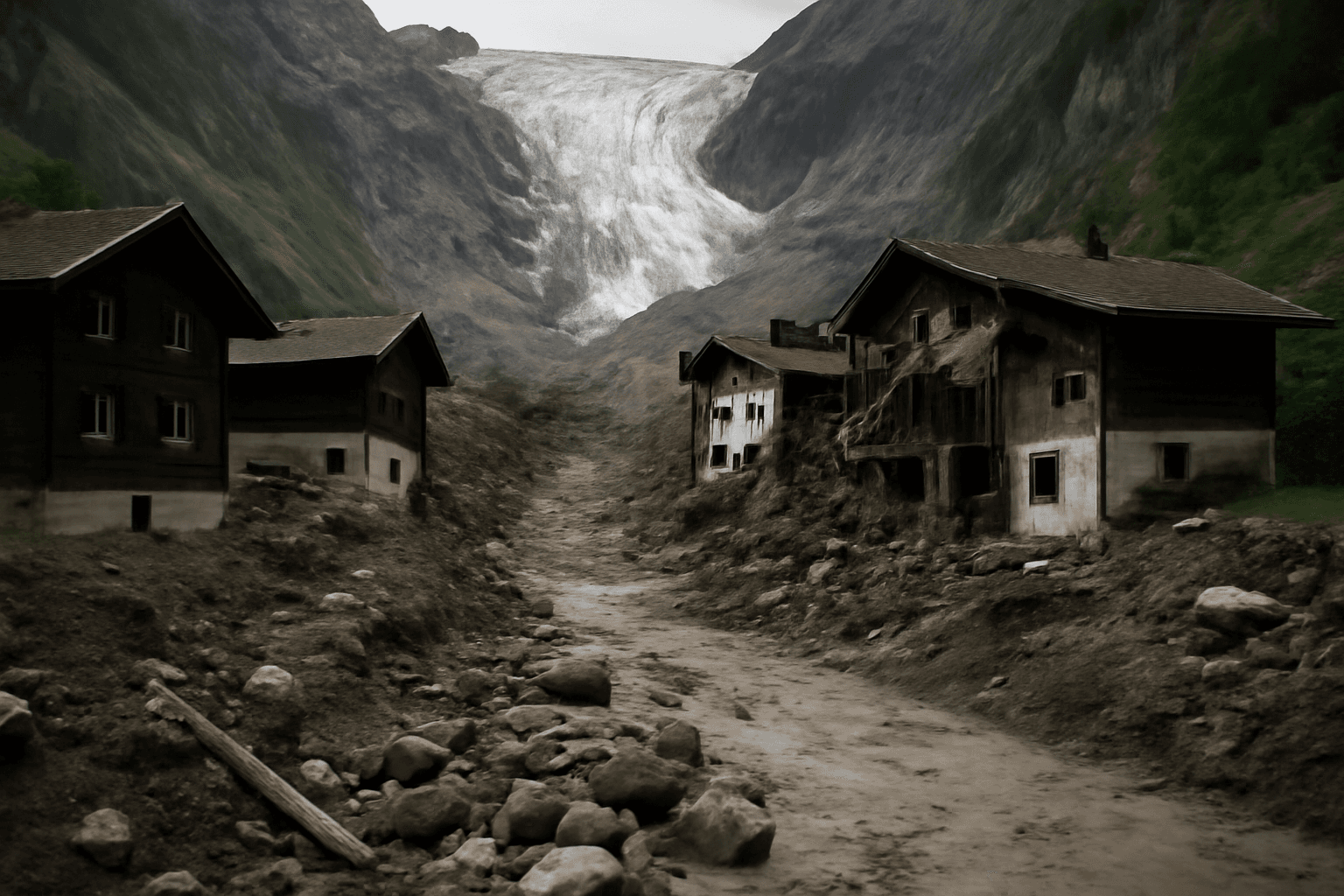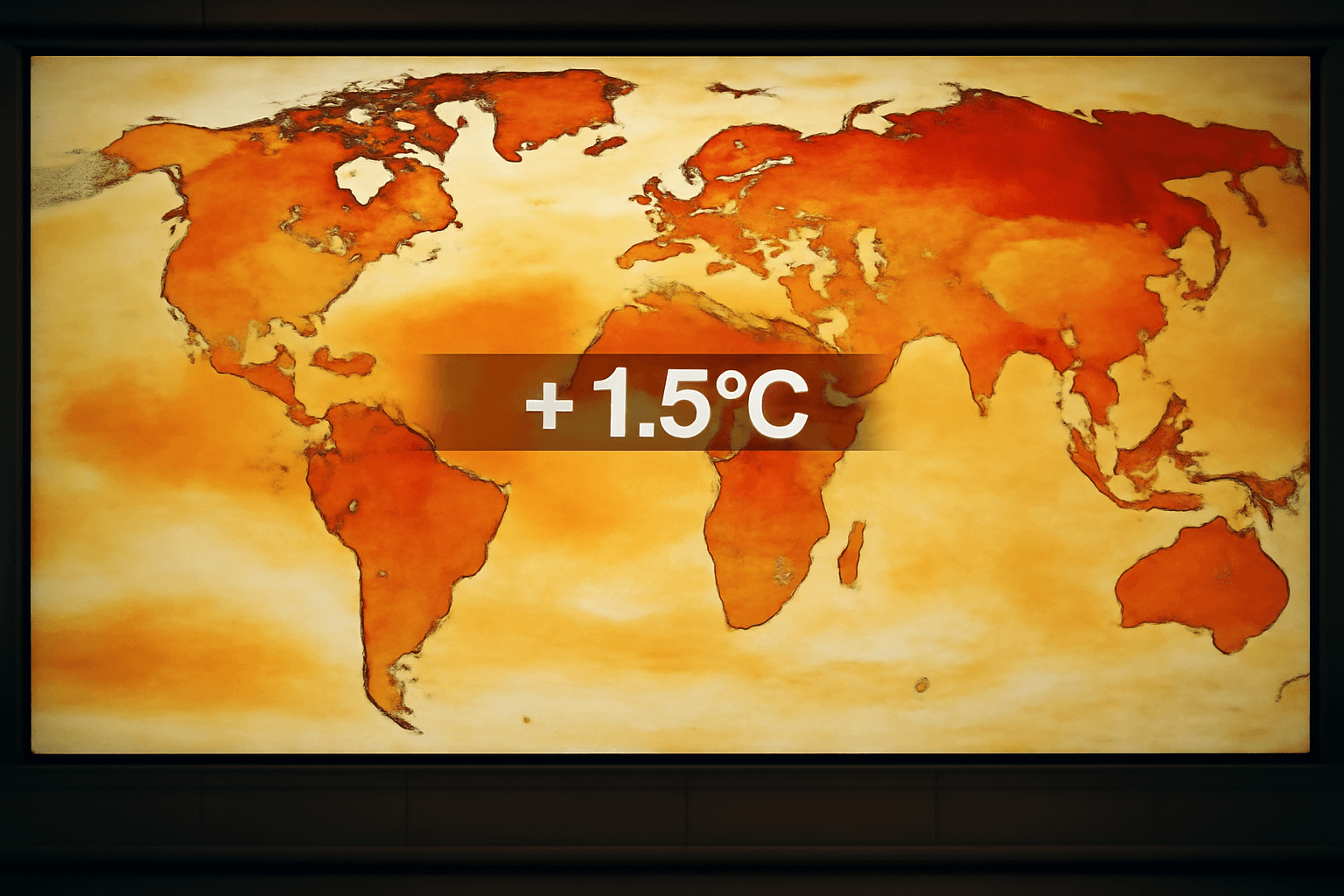A catastrophic glacier collapse struck the village of Blatten in the Swiss Alps, burying it under a destructive mix of ice, mud, and rock. The disaster occurred on Wednesday at approximately 3:30 pm local time when part of the Birch Glacier in Switzerland’s southern Wallis region gave way, triggering a massive deluge. This event devastated around 90% of the village situated in the Lotschental valley, home to approximately 300 residents.
Authorities had issued an evacuation order earlier due to the threat of a landslide; however, some residents chose to remain, including a 64-year-old man who has since been reported missing. Drone footage aired by Swiss broadcaster SRF revealed widespread destruction, with homes engulfed in debris, damaged wooden structures scattered among mud, and the Lonza River flowing through the affected valley.
Matthias Bellwald, mayor of Blatten, described the extent of the damage at a press conference, stating, "We've lost our village." He reassured the community, emphasizing resilience and a commitment to rebuilding.
Swiss President Karin Keller-Sutter expressed sympathy for the residents, acknowledging the profound loss of homes in this tragedy. Matthias Ebener, spokesperson for local authorities, detailed the event’s scale, noting it registered as a 3.1-magnitude seismic event, involving millions of cubic meters of displaced rock, ice, and soil. Prior rockfalls had further destabilized the glacier, magnifying the collapse.
Experts from the University of Zurich attribute the disaster to warming temperatures weakening permafrost, which in turn destabilizes mountain rock formations. This collapse is unprecedented in Switzerland’s recent alpine history. The country, which hosts Europe’s largest glacier network, witnessed a 4% glacier volume reduction in 2023, following a 6% decline in 2022, underscoring the ongoing impacts of climate change on the region.

